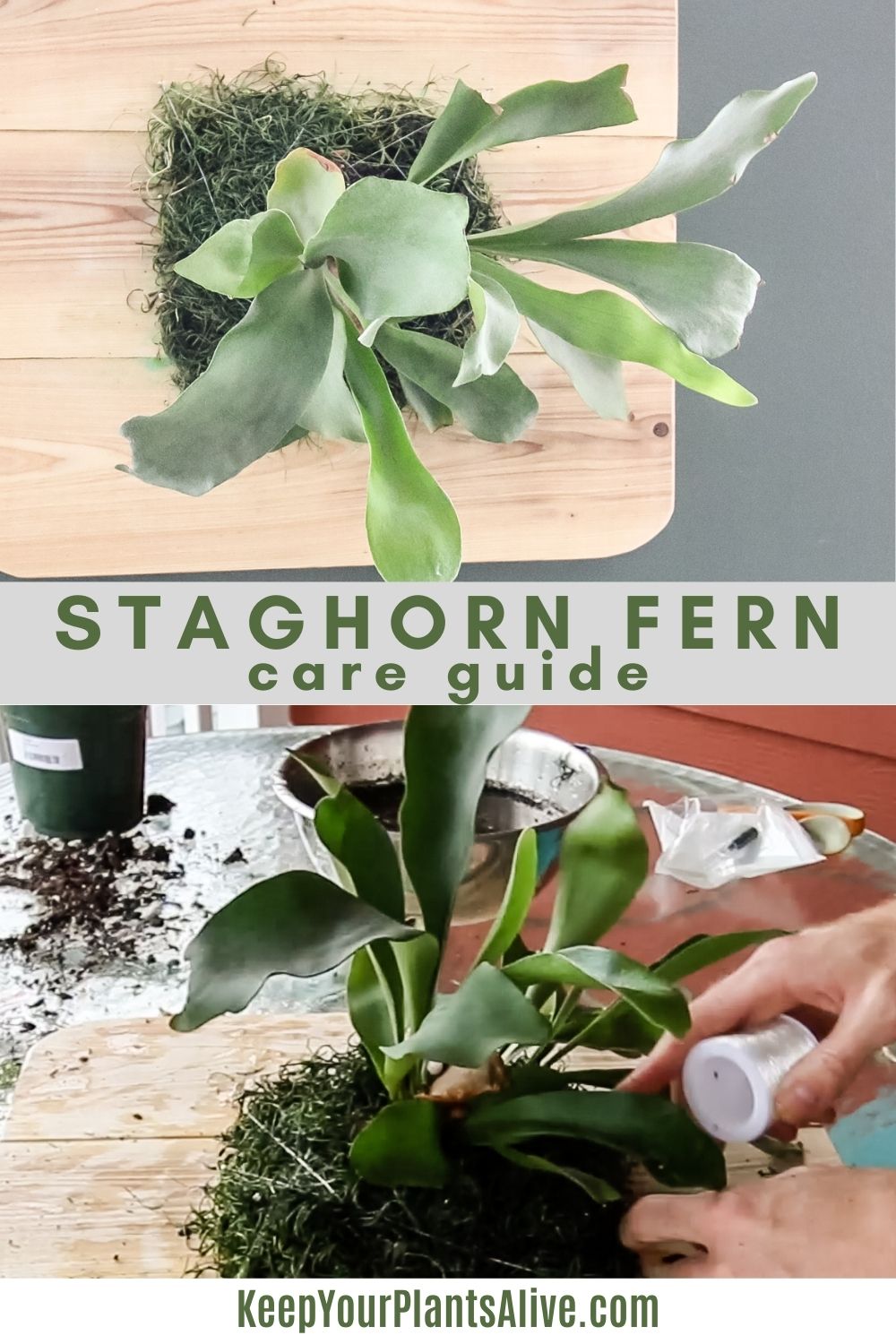Is your staghorn fern looking worse for the wear? Here are the most common causes of a dying staghorn fern and how to fix them!
There is no bigger disappointment than having a lush, helathy plant one day and watching it wither away the next.
Anytime your plant starts looking sad, it could mean that you might have been doing something wrong, or the plant simply needs a bit more love.
Looking at your dying staghorn fern can make you feel down, especially if it is one of your favorite plants.
Below you’ll find a list of the most common problems that you may encounter with your staghorn fern and solutions to provide a quick and efficient fix. Let’s take a look!
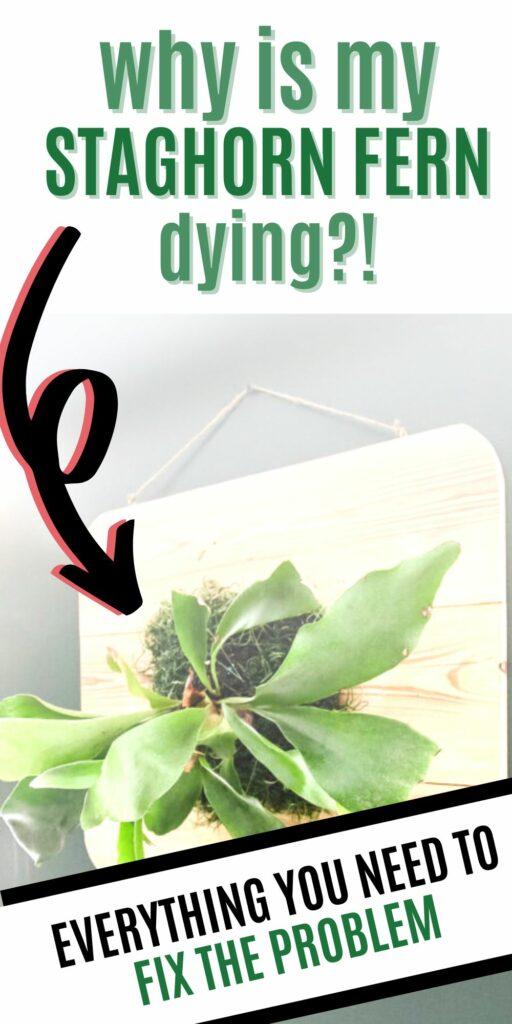
How can you tell something is wrong with your staghorn fern?
Each flora specimen has a unique way of telling you something is wrong. By monitoring their behavior, you can easily spot when something goes astray.
In some cases, it can be the occasional yellowing or falling off of an older leaf, but at other times, the issue might be much bigger.
A few indicators point to staghorn fern problems, and we have listed some of the most common ones. Also, we have added ways to deal with said problem, so you can nurse your plant back to health in no time!
Some of the most common staghorn fern problems include:
- brown leaves
- brown/black leaf tips
- dropping leaves
- root rot
- excessive dryness
- wilting
- black stems
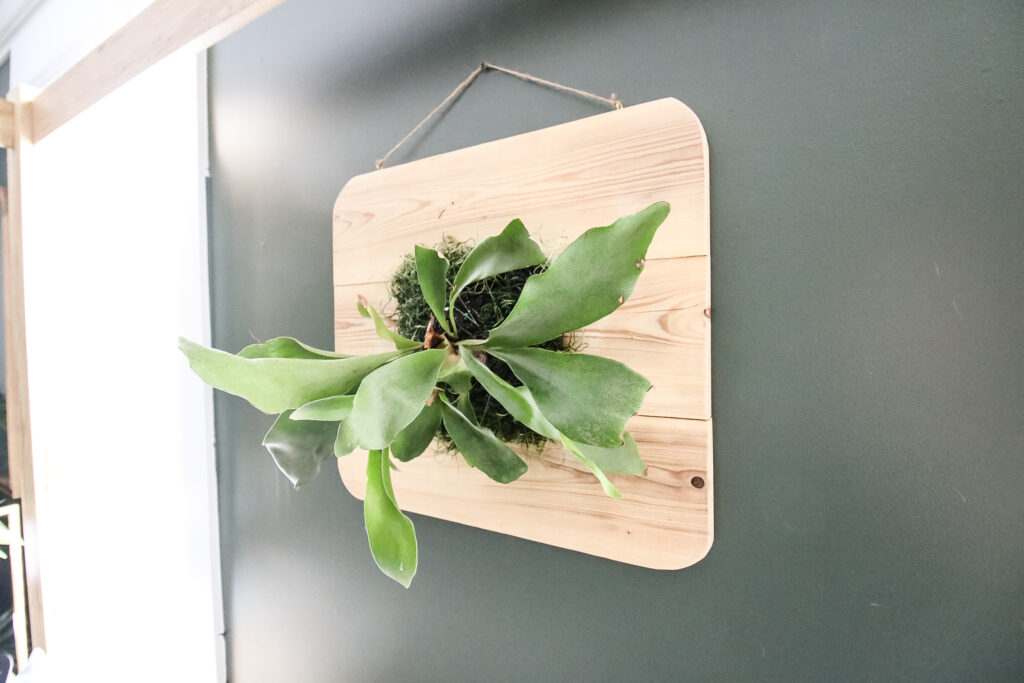
Leaves turning brown
Whenever you notice a change in the leaf color, it might be time to start worrying. If your staghorn fern leaves are turning brown, this might indicate a lack of air or water suffocation.
Solution: Good temperature and humidity
Medium and high humidity are the perfect conditions for a staghorn fern. Don’t know how to give your plant what it needs? Keep it in a more humid area in the home, such as the kitchen or bathroom.
Other ways to add humidity include misting, running a humidifier, or keeping your fern clustered with other houseplants.
Tips of the plant turning black or brown
These leaves are also called antler fronds, and if they start turning a dark color, then that is a bad sign.
Brown tips usually mean a lack of moisture. If this problem continues for a longer time, the entire fern might turn brown and die.
So, it's important to take action!
Solution: Revisit your watering schedule – you don’t have to think much about this. All plants need their fair share of water.
In case you don’t know how to properly water your staghorn fern, wait until it looks slightly wilted or sad, and then water. By doing so, you avoid root rot.
Staghorn fern is a plant that can thrive without water for a long period, but it requires water through its fronds, too, so don’t forget them whenever you are watering it.
I personally water my staghorn fern in the shower, laying it flat down and letting the water get on the leaves, fronds, and base. I then let it dry completely before hanging it back up on the wall!
Dropping leaves
If you notice that your staghorn fern is dropping leaves every once in a while, then you shouldn’t worry. This is a normal process where the plant replaces the old leaves with young, stronger ones.
But, if the situation progresses and turns into lots of dropped leaves, you might have a dying staghorn fern.
The most common reasons are either inadequate humidity or pest infestation.
Solution: Check for pests – on those rare occasions when mealybugs attack, make sure to come prepared. A neem oil or a natural fungicide is your best approach – follow the instructions on the label to do it.
Also, you can change the growing substrate if issues such as brown tips, rotting roots, and drooping leaves persist, even after you have made a few changes to the fern. Add a small amount of slow-release fertilizer and opt for homemade compost.
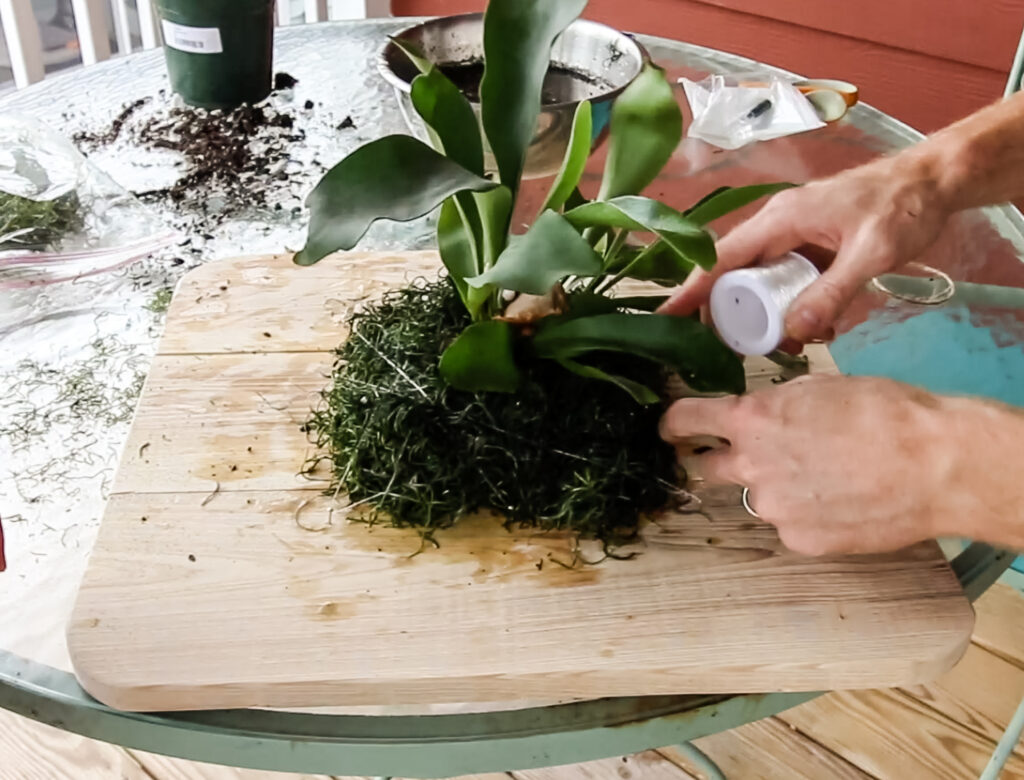
Root rot
This is one of the most common issues of a dying staghorn fern, and the main cause is overwatering the plant.
This causes excessive moisture in the roots, which leads to the roots being unable to get oxygen, resulting in them rotting in puddles of water.
Solution: Fix the roots – remove the fern from its pot and check the condition of the roots. Cut off all the mushy and darkened roots with a sterile knife and let the plant recover.
Remember – never cut off the basal frond, no matter how bad it may seem. Let it fall off on its own - another one will grow back.
Excessive dryness
Take a closer look at your fern – does it look dried out, from the bottom to the top? The reason for that may be the lack of water and unhealthy roots.
Unhealthy roots are unable to absorb water or nutrients, even if you are watering it properly.
Check the roots by pulling the plant gently out of it's soil. Are they black or mushy or crispy? That's not good.
Make sure it survives by giving it water regularly and trimming any dead roots.
Solution: Invigorate the base – trimming the dead roots can cause an imbalance of the entire plant, hence our next recommendation.
Restore this balance by trimming some of the aged fronds so the staghorn fern does not undergo a big shock.
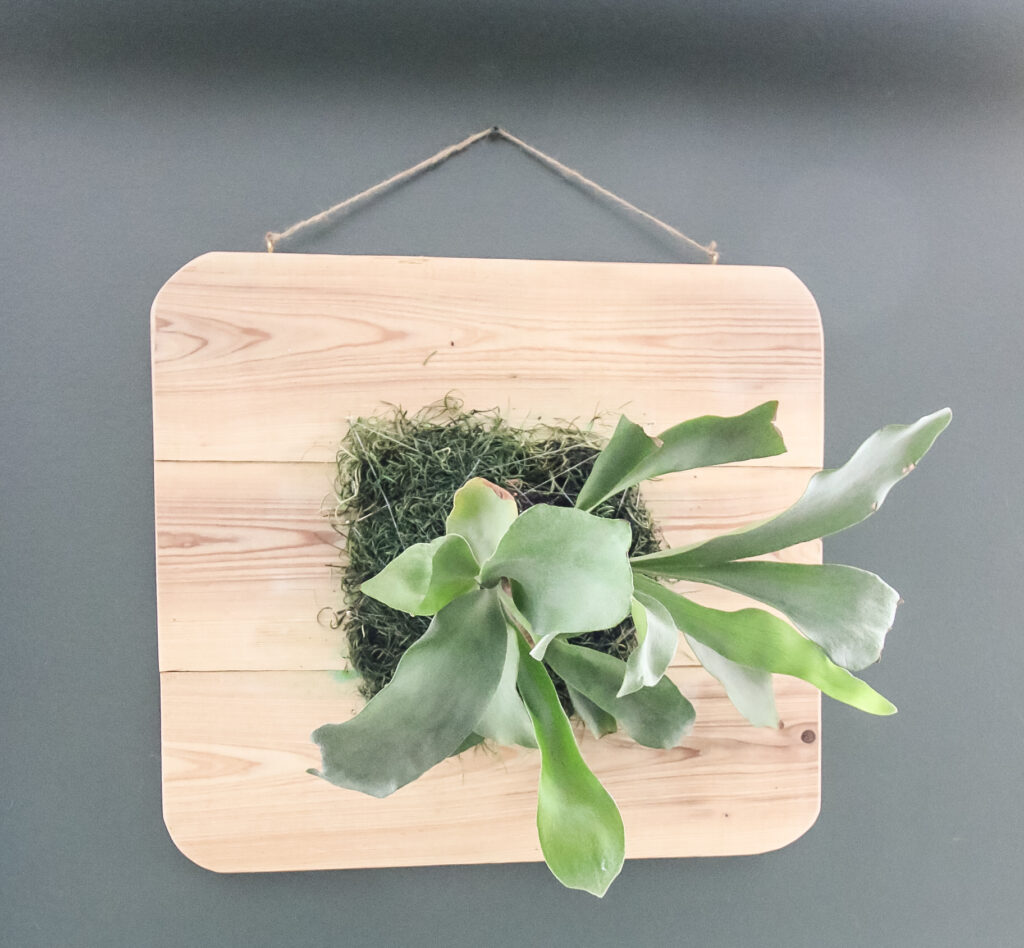
A wilting and weak figure
Instead of enjoying a strong plant, you see that your staghorn fern is wilting and becoming weaker every day.
Assuming that you have your watering under control, the reason for this might be excessive light. The staghorn fern loves diffused light, so keep it away from too much bright light and direct sunlight.
Solution: Appropriate lighting– lighting conditions are as important as watering. Many staghorn fern problems stem from improper lighting, therefore, be careful with direct sunlight, as this plant loves partial shade the most.
Stem turns black
Once the stem turns black, you know that you are dealing with a serious issue. Oftentimes, excessive watering can lead to a dying staghorn fern. Too much of it will cause a disease called Rhizoctonia, which can be fatal to the plant.
Solution: Fertilize appropriately – plants need nutrients just as humans do. When the plant is young, you should apply fertilizer every month.
Once it grows bigger and stronger, you might need to add fertilizer only once or twice a year. Read the instruction label on your fertilizer to ensure you do it properly or check out our free guide!
Now that you know all the causes and solutions to dying staghorn fern, this should be a thing of the past! By successfully abiding by these guidelines, you will be able to give your plant a rejuvenated look!
Enjoyed this blog? Be sure to grab our PDF staghorn fern care guide, which is free to download.
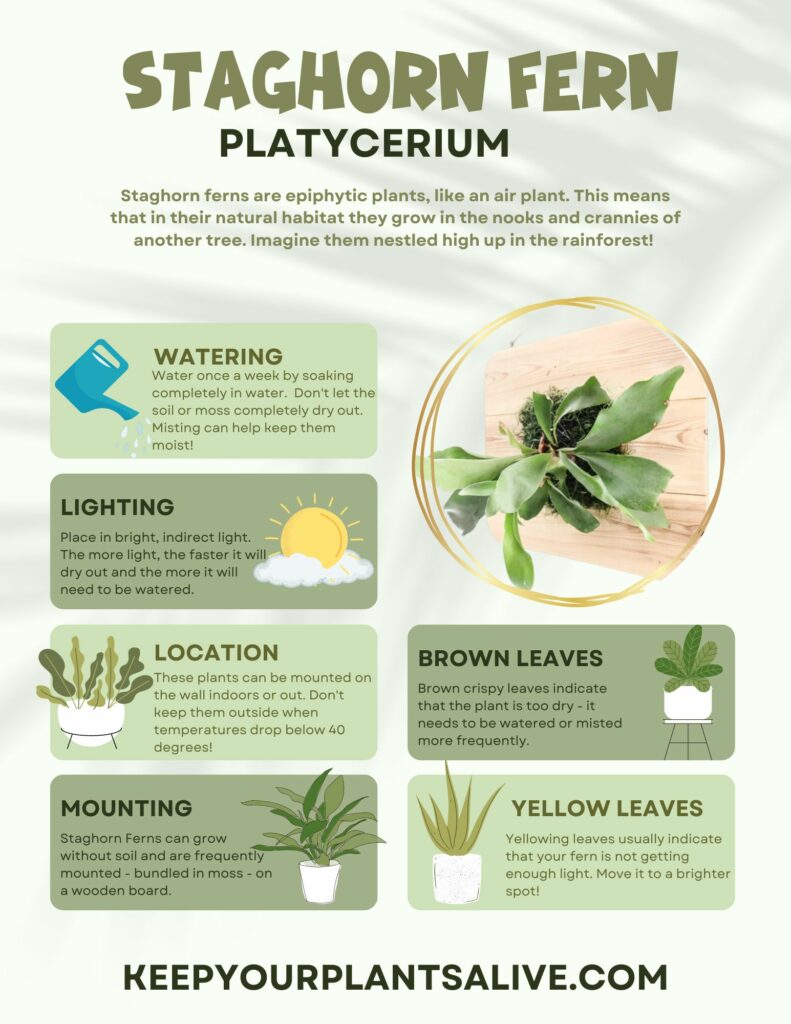
Thanks for reading!


Hey there, I'm Morgan, a houseplant enthusiast from sunny Charleston, South Carolina. Growing up surrounded by my mom's lush orchids and African violets, I discovered the magic of bringing nature indoors. Thanks to the pandemic, I delved deeper into houseplants, discovering their power to uplift moods and transform spaces. I'm here to spill all my secrets, helping you pick the perfect houseplant - and make it happy. Let's keep your plants alive, together! 😊

